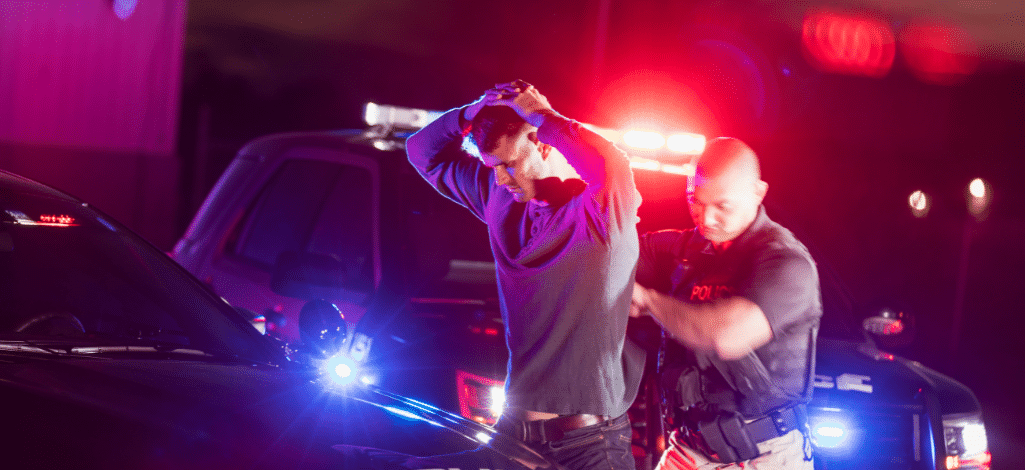Introduction
Section 8 of the Charter of Rights and Freedoms (the “Charter”) guarantees that everyone has the right to be secure against unreasonable search and seizure. R v. Brown and R v. O’Brien both concern potential breaches of the accused’s section 8 Charter rights. However, the distinction between the two cases is that in R v. Brown, the police were acting within their powers, and in R v. O’Brien, the police knowingly pressured the accused into providing more information than was required without first informing him of the potential consequences of compliance. While the outcome of these cases varied considerably, they both can provide meaningful guidance on how police ought to interact with civilians while conducting a search.
R v. Brown, 2023 ONSC 2002
The scene takes place shortly before 10:00 pm on December 1, 2021. A 9-1-1 dispatcher receives a call from a woman reporting to have seen two men fighting and one pulling out a gun in a couple cars as she drove past. The woman was concerned as people were continuing to drive by the potentially dangerous situation. She was not able to identify everything, but she could recall that the men involved were Black, possibly close to six feet tall, with a medium build and the man that pulled the gun was wearing a blue and white jacket.
Based on this information, the dispatcher advised officers in the area that a woman had seen a male point a gun at someone’s head. On patrol that night was Police Constable (“PC”) Hawkins, who was the first to arrive at the scene at approximately 9:55 pm. Upon arrival, PC Hawkins spoke to the woman who pointed out one of the two cars that was involved and still parked. The other, she said, had driven away.
As PC Hawkins approached the vehicle, he saw three men on the boulevard. Two of the three men appeared to be Black, and one appeared mixed race. As PC Hawkins turned on his emergency lights, the three men quickly moved off the boulevard and started to get into a car with its headlights on. PC Hawkins approached the car, and observed four men, one in the driver’s seat, one in the passenger seat and two, including Mr. Brown, in the rear seats.
At the same time, Sgt. Moore heard the same report from dispatch. Sgt. Moore arrived and saw PC Hawkins’ police cruiser parked by the car with its emergency lights flashing. Sgt. Moore parked his cruiser directly in front of the car. As he got out of the cruiser, PC Hawkins informed Sgt. Moore that he had detained the occupants of the car. Shortly after, a third officer arrived on the scene. As the third officer approached the vehicle, he noticed Mr. Brown in the rear seat with his eyes wide open, appearing nervous and alert. The officer drew a taser, pointed it at Mr. Brown and warned him that if he reaches down with his hands, he will be tased. As Mr. Brown was exiting the vehicle, according to Sgt. Moore, his shirt and jacket were lifted, revealing a gun in his waistband. Sgt. Moore yelled “gun” and pushed the accused to the ground.
A central issue in this case was whether the trier of fact accepted Sgt. Moore’s testimony, or the running brief, prepared by PC Gallucci several hours after the incident. Justice Fowler Byrne accepted Sgt. Moore’s evidence since he was the only person able to give direct evidence on the issue. At trial, the alleged infringements of Mr. Brown were each dismissed.
Section 9 of the Charter, which guarantees everyone has a right to not be arbitrarily detained or imprisoned, was found not to be breached. The threshold for reasonable suspicion is low, and the police had arrived at the scene within minutes of receiving a call about a gun; the men matched the description and attempted to leave when they saw the emergency lights engaged. The possible risk of a firearm posed a substantial security risk, and thus met the threshold of a reasonable suspicion.
Section 8 of the Charter was similarly not breached. Fowler Byrne J. found that no search had been conducted prior to Sgt. Moore seeing the gun, as she accepted his testimony; however, even if there had been a search, Justice Fowler Byrne said that a pat down search in this instance would have been reasonable.
In the end, Fowley Byrne J. dismissed Mr. Brown’s application finding that there were no breaches of his Charter rights.
R v. O’Brien, 2023 ONCA 197
This case begins with a caregiver who had created pornographic images and videos of a seven-year-old child in her care. Police tracked who she had been sharing the images with, and one IP address was linked to John O’Brien’s home. A warrant was executed on February 28, 2019, at 9:00 am.
Mr. O’Brien, and his wife, Ms. King were awakened by banging on their front door. Mr. O’Brien opened the door and was greeted by three police officers. The police identified themselves and showed him the warrant, which included authority to search and seize electronic devices. Nearly immediately after entering their home, the police officers demanded the passwords to Mr. O’Brien and Ms. King’s personal electronic devices. The execution of this search warrant produced evidence that led to Mr. O’Brien being charged with accessing child pornography.
At trial, Mr. O’Brien applied to have the evidence secured during the search warrant excluded because of alleged breaches of his Charter rights. Although the trial judge found that the search executed violated Mr. O’Brien’s expectation of privacy, and that his section 9 and 10(b) rights were further breached, she nonetheless admitted evidence obtained from a Dell computer in Mr. O’Brien’s basement. Mr. O’Brien appealed his conviction on three issues., Most significantly, Justice Paciocco agreed with Mr. O’Brien that the trial judge erred in law in her s. 24(2) analysis by allowing evidence to be admitted even though it breached the accused’s Charter rights on the basis that it would not bring the administration of justice into disrepute. Since this was an error in law, it required Paciocco J.A. to undertake the analysis with fresh eyes.
Significant to determining the extent of the Charter breaching behaviour was noted by the trial judge, who highlighted an “apparent cavalier attitude” of the police in obtaining the passwords and called this a “serious matter which needs to be addressed by the police service.” Yet, the trial judge failed to properly consider the systemic nature of the breach in her assessment of whether the admission of this evidence would bring the administration of justice into disrepute.
Ultimately, Mr. O’Brien’s conviction was set aside, and a new trial ordered at which the contents of the Dell computer would be inadmissible.
Conclusion
While varying in fact and outcome, these cases both can offer valuable guidelines for police officers generally. First, in both cases the issue of good note taking by the police came up. In R v. Brown, the Judge accepted the eye-witness testimony of Sgt. Moore and not the running brief notes prepared by PC Gallucci several hours later. The Judge also reasoned that since Sgt. Moore’s notes were not provided as evidence, they must have corroborated his version of event, otherwise the accused would have put them to Sgt. Moore to challenge his credibility. Contrastingly, in R v. O’Brien, the police notes were described as incomplete with “disappointing” gaps on several points. Good notetaking is a useful tool for police officers to bolster their version of events should the situation be put to a trier of fact.
Second, these cases highlight the care that must be taken when conducting a search, either by virtue of a search warrant, or during an investigative detention, police officers must be alive to the Charter, and the importance of privacy. In R v. Brown, Sgt. Moore took reasonable steps to maintain Mr. Brown’s privacy. Conversely, in R v. O’Brien, the officers executing the search warrant, knowing that Mr. O’Brien and Ms. King had a heightened sense of privacy, demanded passwords to their personal devices. The risk in violating Charter rights in searches is high, and as was the case in R v. O’Brien, can result in a conviction being set aside. As such, police need to pay careful attention to how they execute searches, be it in a potentially dangerous and volatile situation, as was the case in R v. Brown, or in a relatively less dangerous situation as was the case in R v. O’Brien. In both cases, the police officers were held to a high standard, and the contrast of the two cases demonstrates the risks associated with knowingly ignoring the importance of the right against unreasonable search and seizure.
If your require additional information or further assistance, please contact David McKnight and Naomi Krueger.




